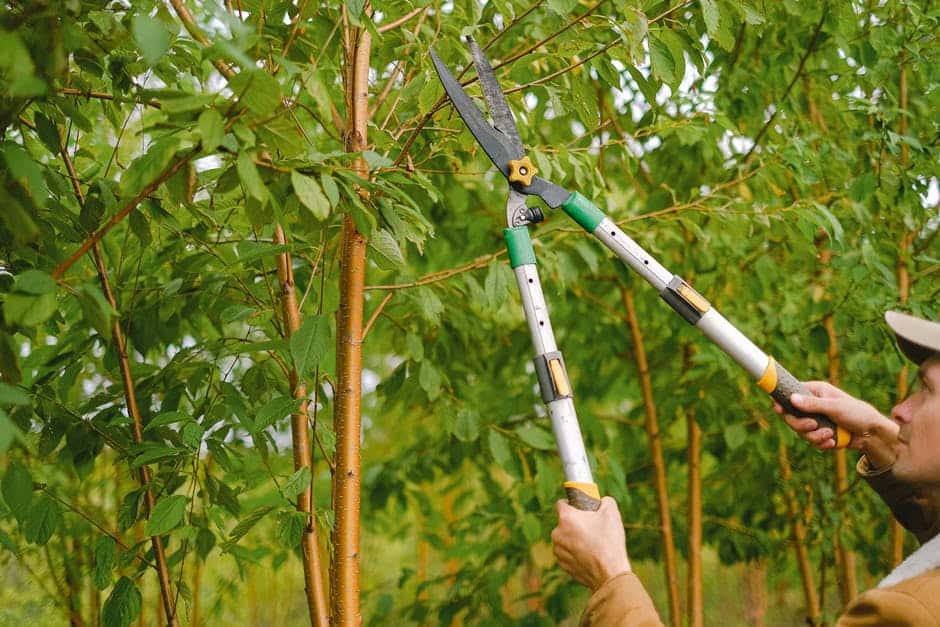Essential Tree Care Tips: Keeping Your Trees Healthy and Beautiful

Essential Tree Care Tips: Keeping Your Trees Healthy and Beautiful
The summer months are almost here, and that means it’s time to take a look at your trees! Trees are a vital part of any landscape, but they need to be cared for to stay healthy and beautiful to avoid accidents from happening.
With the help of essential tree care tips, your tree will be looking lush and vibrant in no time. From understanding the basics of watering, fertilizing and pruning to knowing when to call in a professional, tree care can be easy and enjoyable.
Get ready to give your trees the love they deserve this summer with our guide below!
Regular Tree Maintenance
Regular maintenance is an essential component of tree care as it contributes to the overall health and aesthetic appeal of your trees. One crucial aspect of regular tree maintenance is pruning. Pruning involves the selective removal of specific branches or stems to improve a tree’s structure, health, and appearance.
When done correctly, pruning provides several benefits. It removes dead, damaged, and diseased branches that may pose safety hazards.
Pruning also helps maintain a desirable shape and size for your tree, ensuring it doesn’t become overgrown and unbalanced. By removing crossing or rubbing branches, pruning reduces the risk of damage caused by these branches rubbing against each other or against structures.
It is important to note that pruning should be done with caution and precision. Improper pruning techniques can cause lasting damage to the tree, lead to poorly healed wounds, and make the tree more susceptible to pests and diseases.
It’s always recommended to hire a professional tree care service with certified arborists who have the expertise to prune your trees effectively. In addition to pruning, regular tree maintenance also includes trimming. Trimming focuses on the removal of small branches to improve the overall appearance and density of the tree’s crown.
Trimming can help remove excessive foliage, allowing better air circulation and light penetration to the interior of the tree. This practice promotes overall tree health by preventing fungal diseases and insect infestations that thrive in dense and humid conditions.
Furthermore, regular maintenance may involve the removal of dead branches. Dead wood can become breeding grounds for pests and diseases, and they pose a significant safety risk during strong winds or storms. By removing dead branches promptly, you can safeguard your property and your tree’s health.
Maintain Tree Health
Ensuring the health of your trees is essential for their overall vitality and longevity. Water your trees deeply and infrequently rather than shallowly and frequently.
This encourages deep root growth and helps make the tree stronger. However, be careful not to overwater, as this can lead to root rot.
Apply a layer of organic mulch around the base of the tree, but ensure that the mulch is not directly touching the trunk. Mulch helps retain moisture, regulates soil temperature, and prevents weed growth.
Just like any living organism, trees need proper nutrition to flourish. Tree fertilization plays a crucial role in providing the nutrients necessary for growth, especially in urban environments where the soil may be depleted or lacking essential elements.
Tree fertilization involves the application of supplemental nutrients to the soil to compensate for any deficiencies. This process helps optimize tree growth, increases resistance to diseases and pests, and enhances the tree’s overall health. Consulting with a professional arborist is recommended to determine the specific nutritional requirements for your trees.
Tree Fertilization 411
The first step in tree fertilization is to conduct a soil analysis. This analysis helps determine the specific nutrient deficiencies in the soil, allowing for targeted fertilization. Once the nutrient requirements have been identified, the arborist can recommend the appropriate fertilizer and application method.
Organic fertilizers, such as compost or well-rotted manure, are often preferred as they improve soil structure and microbial activity. They release nutrients slowly over time, providing a steady source of nourishment to the tree. Inorganic fertilizers can also be used but should be applied cautiously to prevent over-fertilization, which can harm the tree and have negative impacts on the environment.
The application timing and rate of fertilizer depend on various factors, including tree species, soil condition, and climate. Generally, it’s best to fertilize deciduous trees in the spring before new growth emerges and evergreen trees in early spring or late fall. Incorporating a slow-release fertilizer can help ensure a continuous supply of nutrients throughout the growing season.
In addition to fertilization, proper watering is crucial for maintaining tree health. Adequate hydration promotes root growth and helps trees withstand drought conditions. However, it’s important to strike a balance and avoid overwatering, as excessive moisture can lead to root rot and other root-related issues.
The frequency and duration of watering depend on factors such as tree species, soil type, climate, and rainfall patterns. During dry periods, it may be necessary to supplement rainfall with deep watering every one to two weeks. This ensures that moisture reaches the tree’s root zone, where it is most needed.
It is also crucial to consider the age of the tree when determining watering needs. Young trees typically require more frequent watering due to their shallower root systems, whereas established trees tend to have deeper roots and may not require as much water.
Feeling Like a Tree Care Pro?
Overall, proper tree care plays an essential part in maintaining a healthy and beautiful landscape. With these tips, caring for and improving your trees should be relatively easy and enjoyable.
Prune your trees at the right time, know their sun needs, and provide regular deep root feeding, you’ll be sure to extend its life expectancy. Contact us for a consultation with a certified arborist.



You must be logged in to post a comment.